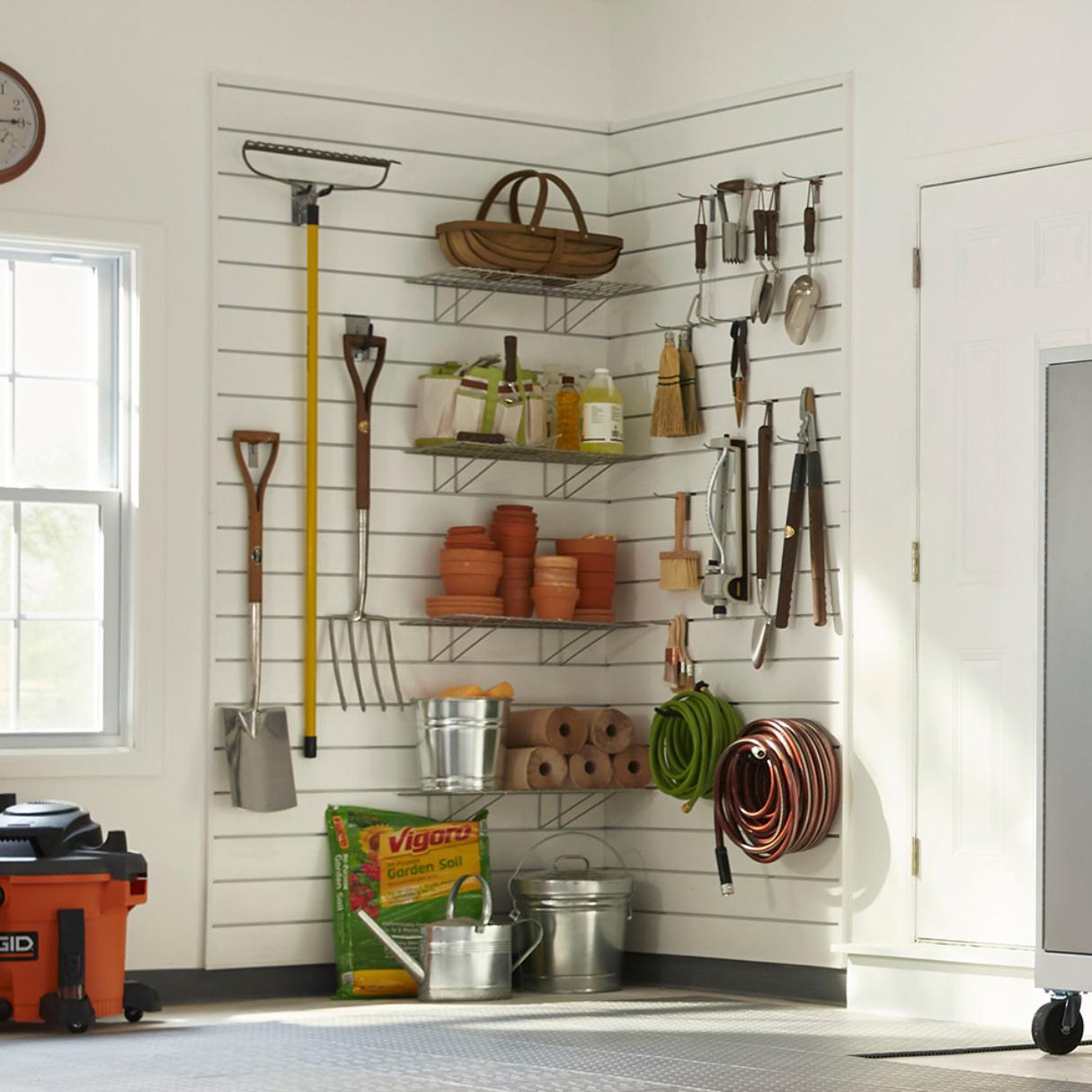

Articles
How To Store Garden Hand Tools
Modified: January 19, 2024
Discover the best tips and techniques for storing your garden hand tools in this informative collection of articles. Keep your tools organized and in top condition with these expert suggestions.
(Many of the links in this article redirect to a specific reviewed product. Your purchase of these products through affiliate links helps to generate commission for Storables.com, at no extra cost. Learn more)
Introduction
Gardening is a satisfying and rewarding hobby for many people. Whether you have a sprawling garden or a small balcony filled with potted plants, having the right set of hand tools is essential for maintaining your green space. From trowels and pruners to shovels and shears, these tools play a crucial role in keeping your plants healthy and your garden thriving.
When it comes to taking care of your garden hand tools, it’s not just about keeping them clean and sharp. Proper storage is equally important in ensuring their longevity and performance. By storing your garden hand tools correctly, you protect them from damage, rust, and wear and tear, saving yourself both time and money in the long run.
This article will guide you through the importance of proper storage for garden hand tools and provide you with essential tips on how to store them effectively. From choosing the right storage location to organizing and cleaning your tools, we’ll explore various storage options and maintenance tips that will help prolong the lifespan of your cherished garden hand tools.
Key Takeaways:
- Proper storage and maintenance of garden hand tools are crucial for their longevity and performance. By investing time and effort into organizing, cleaning, and storing tools correctly, you ensure they remain in excellent condition and ready for use whenever needed.
- Choosing the right storage location, such as a tool shed, wall-mounted rack, or container storage, is essential for protecting garden hand tools from damage and ensuring easy accessibility. Regular cleaning, inspection, and maintenance practices help prolong the lifespan and optimize the performance of tools, contributing to a safer and more enjoyable gardening experience.
Read more: How To Start A Garden With Only Hand Tools
Importance of Proper Storage for Garden Hand Tools
Proper storage of your garden hand tools is key to maintaining their functionality and longevity. Here are a few reasons why investing time and effort into storing your tools correctly is crucial:
- Preventing Damage: By storing your tools properly, you can prevent them from getting damaged. Leaving them exposed to the elements or tossing them in a random pile can lead to bent or broken handles, dull blades, or rust formation. By storing them correctly, you protect them from unnecessary wear and tear.
- Improving Safety: Storing your garden hand tools in an organized manner reduces the risk of accidents. A cluttered storage area where tools are haphazardly placed can result in injuries, such as cuts or falls. By keeping your tools neatly stored, you minimize the chances of accidents and create a safer gardening environment.
- Increasing Lifespan: Taking care of your garden hand tools by providing them with proper storage enhances their lifespan. When tools are exposed to moisture, extreme temperatures, or harsh UV rays, they deteriorate quickly. Storing them in a controlled environment helps protect them from such conditions, ensuring they last longer.
- Easy Accessibility: Storing your tools in an organized manner makes them readily accessible whenever you need them. Imagine trying to find a specific tool buried under a heap of other items or having to search through cluttered drawers. By storing your tools systematically, you save time and frustration, allowing you to focus on your gardening tasks.
- Saving Money: Proper storage of your garden hand tools saves you money in the long run. When you store your tools correctly, you reduce the likelihood of damage or loss, eliminating the need to constantly replace them. By keeping them in good condition, you also save on maintenance and repair costs.
Now that you recognize the importance of proper storage for garden hand tools, let’s delve into the essential steps for storing them effectively. By following these guidelines, you can ensure that your tools remain in excellent condition, ready to assist you in your gardening endeavors.
Basic Steps for Storing Garden Hand Tools
Properly storing your garden hand tools is a straightforward process that involves a few essential steps. By following these steps, you can ensure that your tools are protected and ready for use whenever you need them:
- Clean Your Tools: Before storing your garden hand tools, it’s important to clean them thoroughly. Remove any dirt, mud, or debris from the blades and handles. Use a brush or a rag to remove stubborn grime. Cleaning your tools not only keeps them in good condition but also prevents the spread of diseases and pests from plant to plant.
- Inspect for Damage: After cleaning, inspect your tools for any signs of damage or wear. Check for loose handles, rusted parts, or dull blades. If you notice any issues, make any necessary repairs or consider replacing the tool. It’s important to store tools in proper working condition to ensure optimal performance.
- Apply Lubrication: To prevent rust and keep your tools in top shape, it’s a good idea to apply a thin layer of lubrication. You can use a light oil, such as mineral oil or machine oil, and apply it to the metal parts of your tools. Wipe off any excess oil with a clean cloth, ensuring a thin protective coating is left on the surfaces.
- Arrange and Organize: Next, arrange and organize your tools according to their size and function. Keep similar tools together to make it easier to find what you need. You can use tool racks, pegboards, or storage boxes to maintain order and prevent your tools from getting tangled or damaged.
- Securely Store: Choose a suitable storage location that is protected from the elements. If possible, store your tools indoors in a shed, garage, or tool cabinet. If outdoor storage is your only option, invest in a weatherproof storage box that can protect your tools from rain, sunlight, and extreme temperatures.
By following these basic steps, you can ensure that your garden hand tools are stored properly and remain in excellent condition. Remember, taking the time to store your tools correctly will pay off in the long run, allowing you to enjoy many years of successful gardening.
Choosing the Right Storage Location
When it comes to storing your garden hand tools, choosing the right location plays a crucial role in their protection and longevity. Here are some factors to consider when deciding on a storage location:
- Indoor vs. Outdoor: Ideally, storing your tools indoors is the best option. Indoor storage protects your tools from the elements, such as rain, snow, and extreme temperatures, which can cause rust and damage. However, if indoor storage is not feasible, consider outdoor storage options that provide protection from weather conditions.
- Climate Control: If you have the option, choose a storage location that offers climate control. Extreme heat, cold, or humidity can negatively impact the quality of your tools. Climate-controlled storage helps maintain a stable environment, reducing the risk of rust and other damage.
- Security: Ensure that the storage location is secure. This is particularly important if you’re storing valuable or expensive garden hand tools. Consider installing locks or security measures to prevent theft or unauthorized access.
- Accessibility: Choose a storage location that is easily accessible to you. This will make it convenient to retrieve and return your tools as needed. Consider the proximity to your garden or workspace to minimize the time and effort required to access your tools.
- Space Availability: Assess the amount of space you have available for storage. Whether it’s a shed, garage, tool cabinet, or a designated area in your home, ensure that there is enough room for all your garden hand tools. Avoid overcrowding, as it can lead to damage or difficulty in finding the tools you need.
Based on these considerations, you can determine the most suitable storage location for your garden hand tools. Remember, the goal is to provide your tools with a safe and protected environment that minimizes the risk of damage and maximizes their lifespan.
Organizing and Cleaning Garden Hand Tools
Proper organization and regular cleaning of your garden hand tools are essential for their longevity and performance. Here are some tips to help you keep your tools organized and in excellent condition:
- Create a Dedicated Storage Area: Designate a specific area in your shed, garage, or tool cabinet for your garden hand tools. This will help you keep them organized and prevent them from getting mixed up with other tools or equipment. Consider using racks, hooks, or pegboards to hang your tools and keep them easily accessible.
- Group Similar Tools Together: Categorize your tools based on their function or type and keep them grouped together. For example, keep all the pruning tools in one section and the digging tools in another. This makes it easier to find the exact tool you need when you’re in the middle of a gardening task.
- Keep Handles Clean and Dry: Clean the handles of your tools regularly to remove any dirt or grime. Use a damp cloth or sponge to wipe them down after each use. Make sure to dry the handles thoroughly afterward to prevent moisture from seeping into the wood or causing rust on metal handles.
- Sharpen Blades: Sharp blades are essential for efficient and precise cutting. Regularly check the blades of your pruners, shears, and other cutting tools for sharpness. If they become dull, use a sharpening tool to restore their cutting edge. A sharp blade not only makes gardening tasks easier but also provides cleaner cuts, promoting healthy plant growth.
- Remove Rust: If you notice any rust on the metal parts of your tools, remove it promptly. Use steel wool or a wire brush to scrub away the rust, then apply a thin layer of oil to prevent further rust formation. Regular maintenance and rust prevention help extend the lifespan of your tools.
- Store Tools Clean and Dry: Before storing your garden hand tools, ensure they are clean and completely dry. Any moisture left on the tools can lead to rust or corrosion while in storage. Wipe them down with a dry cloth or towel before placing them in their designated storage area.
By following these organizing and cleaning tips, you can maintain the functionality and durability of your garden hand tools. Regular maintenance not only extends their lifespan but also ensures that they perform at their best when you need them for your gardening tasks.
Read more: What Hand Tools Do Farmers Use
Types of Storage Options
There are various storage options available for organizing and safeguarding your garden hand tools. Here are a few popular choices that you can consider:
- Wall-Mounted Tool Rack: A wall-mounted tool rack is a practical and space-saving option. It consists of hooks, slots, or hangers attached to a wall or a pegboard. You can hang your tools, such as shovels, rakes, or hoes, on the rack, keeping them off the ground and easily accessible. This option is great for small gardening spaces or areas with limited storage options.
- Tool Shed or Storage Box: A dedicated tool shed or storage box provides a more comprehensive storage solution. These structures are specifically designed to house and protect your garden hand tools from the elements. They often feature shelves, hooks, and compartments to keep your tools organized and secure. Tool sheds or storage boxes come in various sizes and materials to suit different storage needs and preferences.
- Bucket or Container Storage: If you prefer a simple and cost-effective storage solution, using buckets or containers can be a great option. Place your tools in a sturdy bucket or container and store them in a designated area. You can add dividers or smaller containers within the bucket to keep your tools organized and prevent them from clashing or getting damaged.
- Tool Belt or Apron Storage: For easy access and portability, consider using a tool belt or apron to store your most frequently used hand tools. This option is ideal for gardeners who prefer to have their tools readily available while working. With a tool belt or apron, you can keep your essential tools within reach, making gardening tasks more efficient and convenient.
When choosing a storage option, consider your specific needs, the amount of space available, and the number and types of tools you have. Each option has its advantages, so select the one that best fits your gardening style and storage requirements.
Remember, regardless of the storage option you choose, always keep your tools clean, dry, and organized for optimal performance and longevity. Regularly inspect and maintain your tools to ensure they are in top condition and ready for use.
To store garden hand tools, clean them thoroughly to remove any dirt or debris, then apply a light coat of oil to prevent rust. Hang them on a pegboard or store in a designated area to keep them organized and easily accessible.
Wall-Mounted Tool Rack
A wall-mounted tool rack is a practical and efficient storage option for organizing and keeping your garden hand tools easily accessible. This type of storage solution utilizes the vertical space on a wall or pegboard, helping you maximize your available storage area. Here are some key features and benefits of using a wall-mounted tool rack:
- Space-Saving: One of the main advantages of a wall-mounted tool rack is that it saves valuable floor space in your shed, garage, or gardening area. By utilizing the vertical space on a wall, you free up room for other gardening equipment or supplies.
- Easy Accessibility: With a wall-mounted tool rack, your garden hand tools are conveniently within reach. You can hang your tools on hooks, slots, or hangers, keeping them organized and visible. This makes it easy to retrieve the specific tool you need for a particular gardening task.
- Prevents Clutter: By hanging your tools on a wall-mounted rack, you can eliminate clutter and prevent your tools from getting buried or tangled. Each tool has its designated spot, reducing the chances of misplacing or losing them. Additionally, it allows for quick and efficient clean-up after each gardening session.
- Protection and Durability: A wall-mounted tool rack helps protect your garden hand tools from damage. When stored properly on the rack, the tools are less likely to experience bending, breaking, or dulling. It also keeps the tools elevated and away from moist or damp surfaces, reducing the risk of rust or corrosion.
- Easy Installation: Installing a wall-mounted tool rack is typically a straightforward process. Most racks come with mounting hardware, such as screws or brackets, to secure them to the wall or pegboard. Follow the manufacturer’s instructions and ensure that the rack is firmly attached to provide stable and reliable storage for your tools.
- Customizable and Expandable: Many wall-mounted tool racks offer customizable options with adjustable hooks or slots. This allows you to adapt the rack to accommodate different sizes and types of garden hand tools. Additionally, if you find that your tool collection grows over time, you can easily expand the rack or add additional racks to meet your storage needs.
With a wall-mounted tool rack, you can keep your garden hand tools organized, protected, and easily accessible. Whether you have a small gardening space or a larger tool collection, this storage option offers a practical and efficient solution for maintaining a clutter-free and functional workspace.
Remember to clean and inspect your tools regularly, even when they are stored on a wall-mounted rack. This will help prolong the lifespan of your tools and ensure optimal performance whenever you embark on your gardening adventures.
Tool Shed or Storage Box
A tool shed or storage box is a popular choice when it comes to storing and protecting your garden hand tools. These structures provide a dedicated space to keep your tools safe from the elements and organized for easy access. Here are some key features and benefits of using a tool shed or storage box:
- Weather Protection: One of the primary advantages of a tool shed or storage box is its ability to shield your tools from harsh weather conditions. These structures are designed to withstand rain, snow, and sunlight, ensuring your tools remain dry and protected. This protection helps prevent rust, corrosion, and damage caused by exposure to moisture and UV rays.
- Storage Capacity: Tool sheds and storage boxes come in various sizes to accommodate different tool collections. From small boxes to spacious sheds, you can select the size that suits your specific needs. With ample storage space, you can not only store your garden hand tools but also keep additional gardening equipment, such as watering cans, pots, and fertilizers, in one convenient location.
- Organization and Accessibility: Tool sheds and storage boxes often feature shelves, hooks, and compartments that allow you to organize your tools effectively. You can categorize your tools by function or type, making it easier to locate the specific tool you need. With proper organization, you can maximize the use of space and maintain a clean and clutter-free storage area.
- Security: Many tool sheds and storage boxes come with locking mechanisms to ensure the security of your valuable tools. You can have peace of mind knowing that your tools are safe from theft or unauthorized access. Additionally, some sheds or boxes can be anchored to the ground for added stability and security.
- Durability and Longevity: Tool sheds and storage boxes are designed to be durable and long-lasting. They are constructed using sturdy materials such as wood, metal, or plastic, which can withstand the test of time and resist wear and tear. With proper maintenance, these structures can protect your tools for many years, saving you from frequent tool replacements.
- Customization Options: Depending on the type of tool shed or storage box you choose, there may be options for customization. You can add additional shelves, hooks, or compartments to suit your specific requirements. This allows you to adapt the storage space to the size and types of tools you have.
By investing in a tool shed or storage box, you create a dedicated space to keep your garden hand tools secure, organized, and protected. These structures not only provide shelter but also offer convenience and peace of mind, ensuring your tools are readily accessible and in top condition whenever you need them.
Remember to clean and maintain your tools regularly, even when stored in a shed or storage box. Regular maintenance and proper storage practices go hand in hand in prolonging the lifespan and performance of your beloved garden hand tools.
Bucket or Container Storage
Bucket or container storage is a simple and cost-effective solution for organizing and storing your garden hand tools. It offers a convenient way to keep your tools in one place while protecting them from damage. Here are some key features and benefits of using bucket or container storage for your garden hand tools:
- Easy and Affordable: Using buckets or containers for tool storage is a budget-friendly option. You can repurpose household items like buckets or plastic containers to create a storage solution. These materials are readily available and can be easily obtained at low or no cost.
- Portability: One of the advantages of bucket or container storage is its portability. You can easily transport your tools from one location to another, whether it is to your garden, a friend’s house, or a community garden. This mobility allows you to have your essential tools with you wherever you go, making gardening tasks more convenient.
- Customizable: With bucket or container storage, you have the flexibility to customize your storage solution based on your tool collection and personal preferences. You can add dividers or smaller containers within a larger container to keep your tools separated and organized. This customization helps prevent tools from clashing or getting damaged during storage.
- Protection from Damage: When storing your tools in buckets or containers, they are kept upright and prevented from moving around or getting tangled. This reduces the risk of damage, such as bending or breaking handles or blades. Additionally, the container acts as a barrier, protecting your tools from dust, dirt, and moisture.
- Space Efficient: Bucket or container storage is ideal for those with limited space. You can stack the containers vertically, utilizing the height potential of your storage area. This efficient use of space helps keep your tools organized and prevents clutter in your gardening space.
- Easy Identification: Labeling your buckets or containers can make it easier to identify specific tools or tool categories. Use waterproof labels or markers to mark the contents of each container. This saves time by allowing you to quickly locate the tool you need without rummaging through multiple containers.
Bucket or container storage offers a practical and versatile solution for organizing and protecting your garden hand tools. Whether you have a small tool collection or a larger assortment, this storage option can be customized to fit your needs while remaining affordable and accessible.
Remember to clean your tools before storing them in buckets or containers to prevent the buildup of dirt and moisture. Regular maintenance and proper storage practices will help ensure your tools remain in optimal condition and ready for your gardening tasks.
Read also: 9 Best Garden Hand Tools for 2024
Tool Belt or Apron Storage
Tool belt or apron storage offers a convenient and portable solution for keeping your most frequently used garden hand tools within easy reach. By wearing a tool belt or apron, you can carry your essential tools with you as you move around your garden, making gardening tasks more efficient and enjoyable. Here are some key features and benefits of using tool belt or apron storage:
- Accessibility: With a tool belt or apron, your garden hand tools are readily accessible. You can keep your most frequently used tools in the pockets, loops, or pouches of the belt or apron, allowing you to grab them quickly as needed. This eliminates the need to constantly go back and forth to a storage area, saving you time and effort.
- Portability: Tool belt or apron storage offers excellent portability. You can wear it around your waist or upper body, providing you with a hands-free and hassle-free way to carry your tools. This convenience allows you to move freely throughout your garden, ensuring you have your tools at your fingertips wherever you go.
- Efficient Organization: Tool belts and aprons typically come with multiple pockets, loops, and compartments. This allows you to organize your tools in a way that suits your preferences and gardening style. You can allocate specific pockets for different types of tools, keeping them separated and preventing them from colliding or becoming tangled.
- Comfort and Flexibility: The design of tool belts and aprons takes into consideration comfort and flexibility, allowing you to wear them for extended periods without strain or discomfort. Look for belts or aprons that are adjustable to fit your waist or body size, as well as those made from durable and breathable materials.
- Hands-Free Convenience: With your tools within easy reach on your tool belt or apron, you have the freedom to use both hands for gardening tasks. This hands-free convenience allows you to focus on your gardening activities with increased efficiency and productivity.
- Versatility: Tool belts and aprons are not limited to just gardening tasks. They can also be used for other DIY projects, home maintenance, or even for hobbies like woodworking. This versatility makes them a practical investment that can be utilized in various scenarios.
Tool belt or apron storage provides a convenient and efficient way to carry and access your garden hand tools. By keeping your tools within reach, you can streamline your gardening activities and ensure that you always have the right tool for the job.
Remember to clean and maintain your tools regularly, even when stored in a tool belt or apron. Regular inspection and maintenance will help prolong the lifespan and performance of your tools, ensuring they remain in optimal condition for your gardening endeavors.
Maintenance Tips for Garden Hand Tools
Maintaining your garden hand tools is crucial for their longevity, performance, and your overall gardening experience. Regular maintenance helps keep your tools in excellent condition, prevents deterioration, and ensures optimal functionality. Here are some essential maintenance tips for your garden hand tools:
- Clean After Each Use: Dirt, soil, and plant debris can accumulate on your tools during use. After each gardening session, take the time to clean your tools. Use a brush, hose, or damp cloth to remove any dirt, mud, or residue. Cleaning your tools not only keeps them looking good but also prevents the spread of diseases and pests from plant to plant.
- Inspect for Damage: Regularly inspect your tools for signs of damage, wear, or rust. Check the handles for cracks or splinters and make sure they are securely attached. Examine the blades for dullness, nicks, or rust spots. Address any issues promptly to prevent further damage and maintain the proper functionality of your tools.
- Sharpen Blades: Sharp blades are essential for efficient and precise cutting. If you notice that your pruning shears, shears, or other cutting tools are not performing as well as they used to, it may be time to sharpen their blades. Use a sharpening tool, such as a file or whetstone, to restore the sharpness of the blades. Follow the manufacturer’s instructions or seek guidance from a professional if you are unsure about the sharpening process.
- Apply Lubrication: To protect your tools from rust and ensure smooth operation, apply a thin layer of lubrication to the metal parts. Use a light oil, such as mineral oil or machine oil, and apply it to the blades and hinge areas of your tools. Wipe off any excess oil with a clean cloth, ensuring a thin, even coating remains on the metal surfaces.
- Store Properly: Proper storage is key to maintaining the condition of your garden hand tools. Clean and dry your tools thoroughly before storing them. Choose a suitable storage location that is protected from the elements, such as a tool shed, storage box, or wall-mounted rack. Keep your tools organized, either by hanging them or using dividers or compartments, to prevent them from banging or rubbing against each other.
- Replace Worn or Damaged Parts: Over time, parts of your garden hand tools may become worn out or damaged. It’s essential to regularly inspect the tools and replace any worn or broken parts. Replace loose handles, worn-out blades, or any other components that are no longer functioning properly. This will ensure the safety and performance of your tools.
- Keep Tools Dry: Moisture can lead to rust and corrosion, impacting the lifespan and performance of your tools. After cleaning your tools, make sure to dry them thoroughly before storing. If your tools come into contact with water during use, wipe them dry as soon as possible to prevent moisture from seeping into the metal or wooden parts.
- Protective Storage: When storing your tools, consider using protective coverings or sheaths for sharper blades. This will help prevent accidental cuts and keep the blades in good condition. Additionally, storing tools in a tool box or container with a lid can offer an extra layer of protection against dust, dirt, and moisture.
By following these maintenance tips, you can extend the lifespan of your garden hand tools and ensure their optimal performance. Regular cleaning, inspection, sharpening, and lubrication, along with proper storage, will keep your tools in excellent shape and ready for your gardening adventures.
Remember, safety should always be a priority when handling and maintaining your tools. Wear appropriate protective gear, such as gloves and safety goggles, when necessary, and use caution when sharpening or handling sharp blades.
Conclusion
Proper storage and maintenance of your garden hand tools are essential for their longevity, performance, and your overall gardening experience. By investing time and effort into storing and caring for your tools correctly, you ensure that they remain in excellent condition and ready for use whenever you need them.
Throughout this article, we have discussed the importance of proper storage for garden hand tools and provided tips on how to store them effectively. We explored various storage options, including wall-mounted tool racks, tool sheds or storage boxes, bucket or container storage, and tool belt or apron storage. Each option offers its own set of advantages, allowing you to select the right storage solution based on your needs and available space.
We also discussed the basic steps for storing your tools, which involve cleaning, inspecting, and organizing them before storing in a suitable location. Additionally, we provided maintenance tips, such as regular cleaning, sharpening blades, applying lubrication, and replacing worn or damaged parts. By following these maintenance practices, you can prolong the lifespan and optimize the performance of your garden hand tools.
Remember, the proper storage and maintenance of your tools not only save you time and money but also contribute to a safer and more enjoyable gardening experience. By protecting your tools from damage, rust, and wear and tear, you ensure that they are always ready to assist you in maintaining a beautiful and thriving garden.
So, take the time to clean, inspect, organize, and store your garden hand tools properly. Incorporate these maintenance practices into your gardening routine, and you will reap the rewards of having reliable and efficient tools that bring your gardening aspirations to life.
Frequently Asked Questions about How To Store Garden Hand Tools
Was this page helpful?
At Storables.com, we guarantee accurate and reliable information. Our content, validated by Expert Board Contributors, is crafted following stringent Editorial Policies. We're committed to providing you with well-researched, expert-backed insights for all your informational needs.
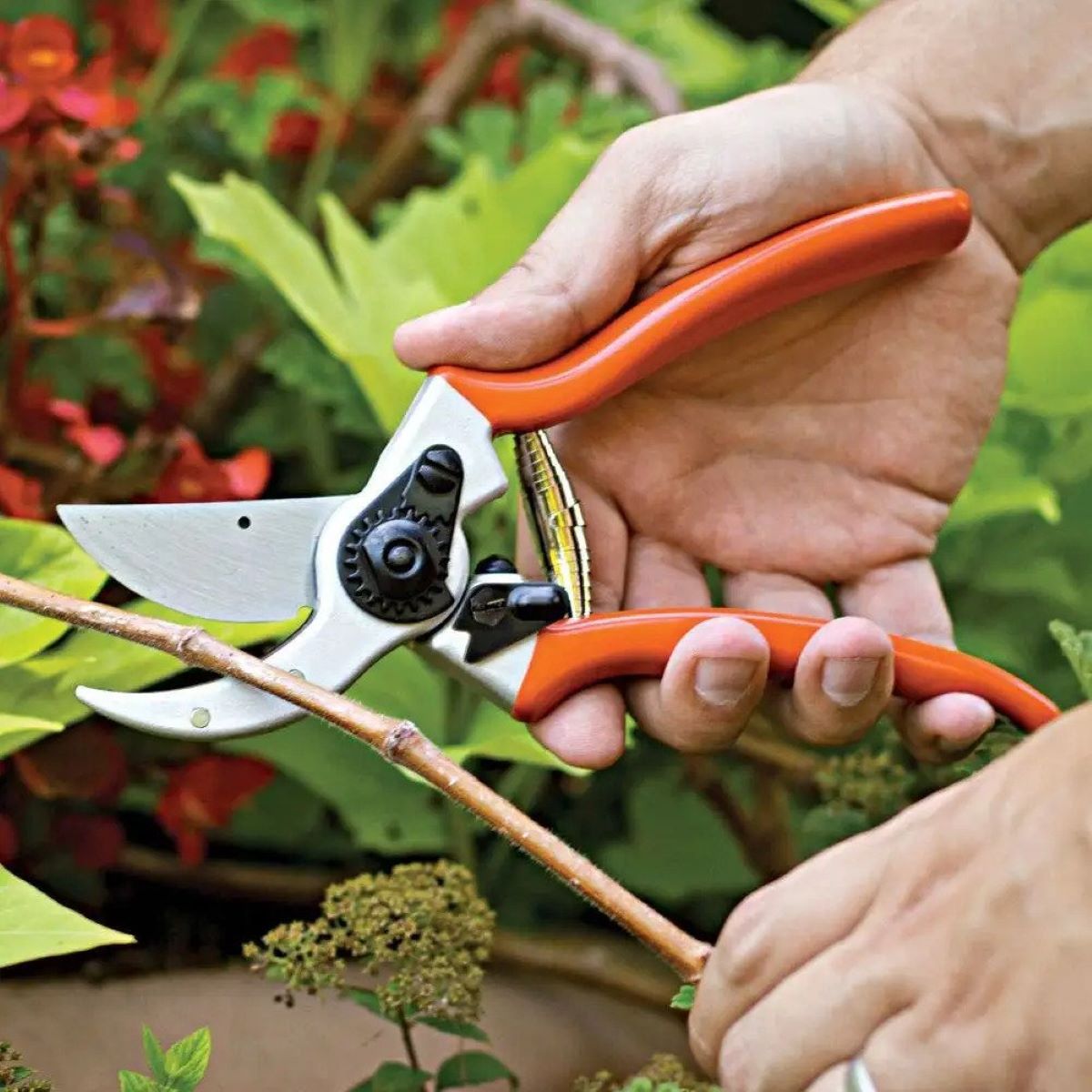
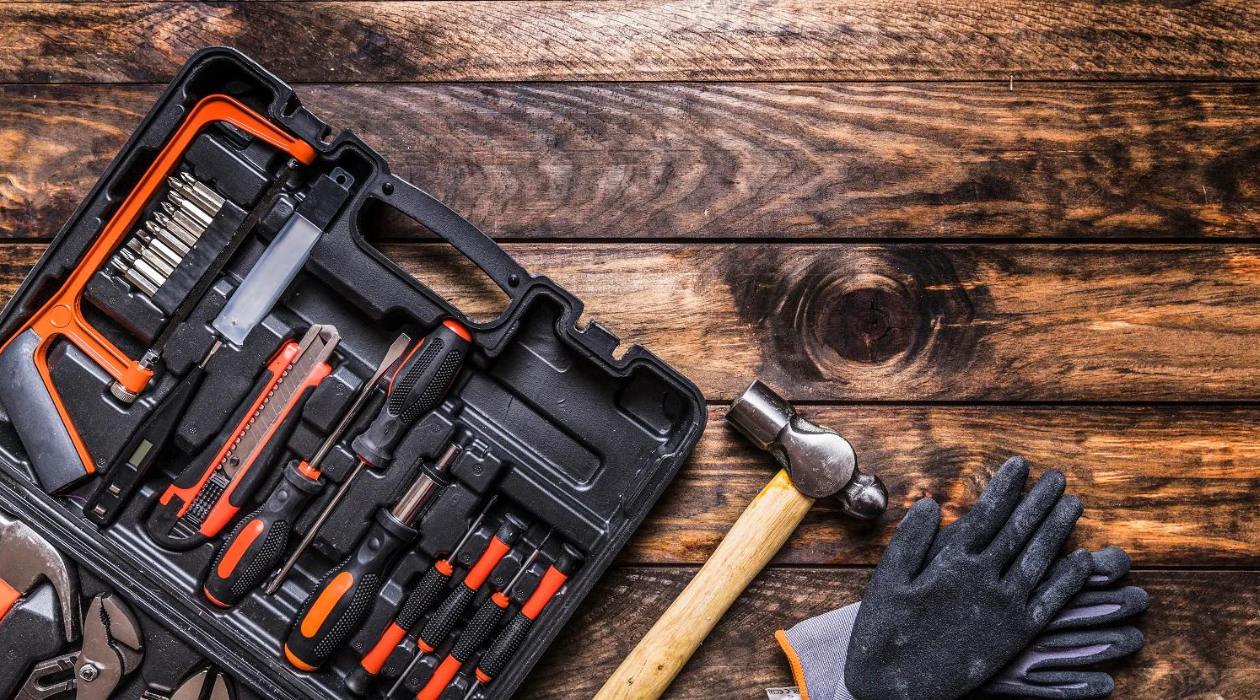
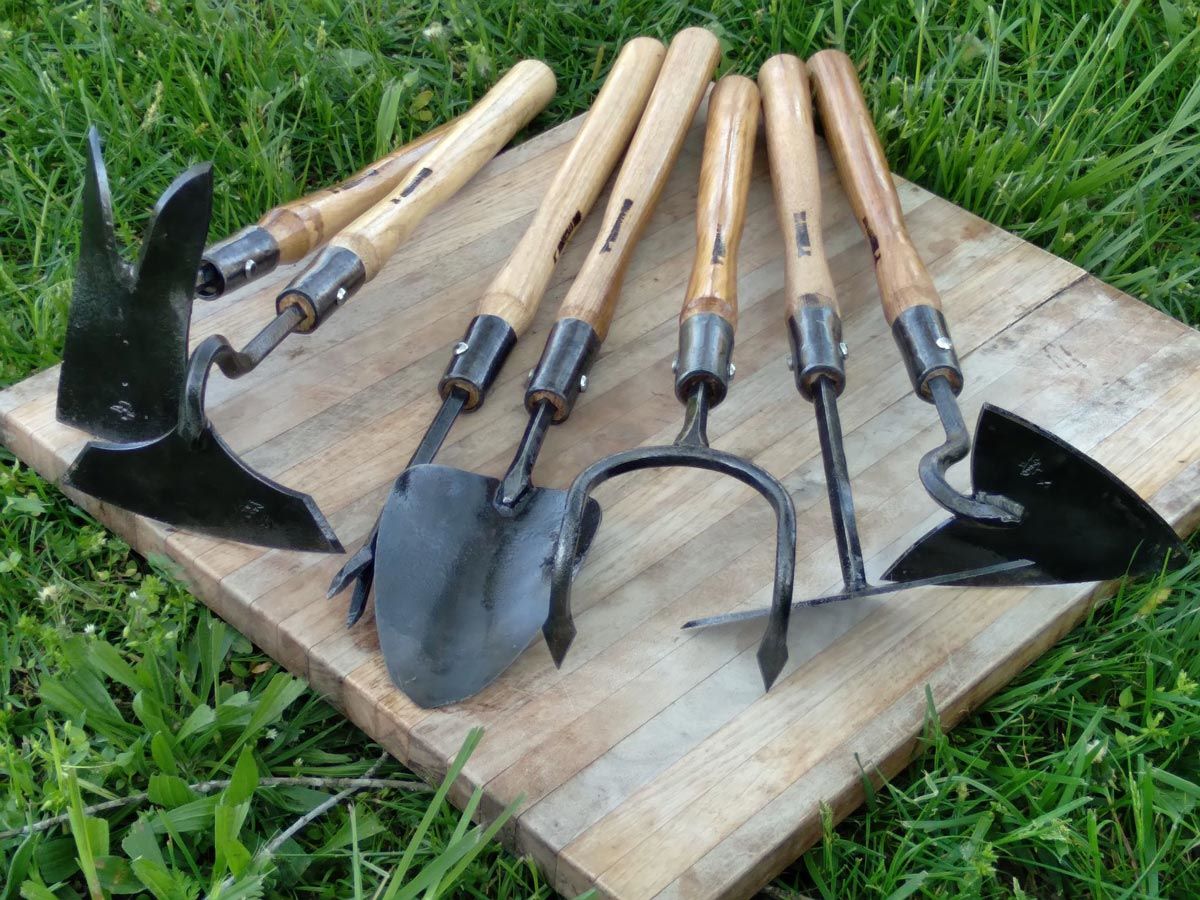
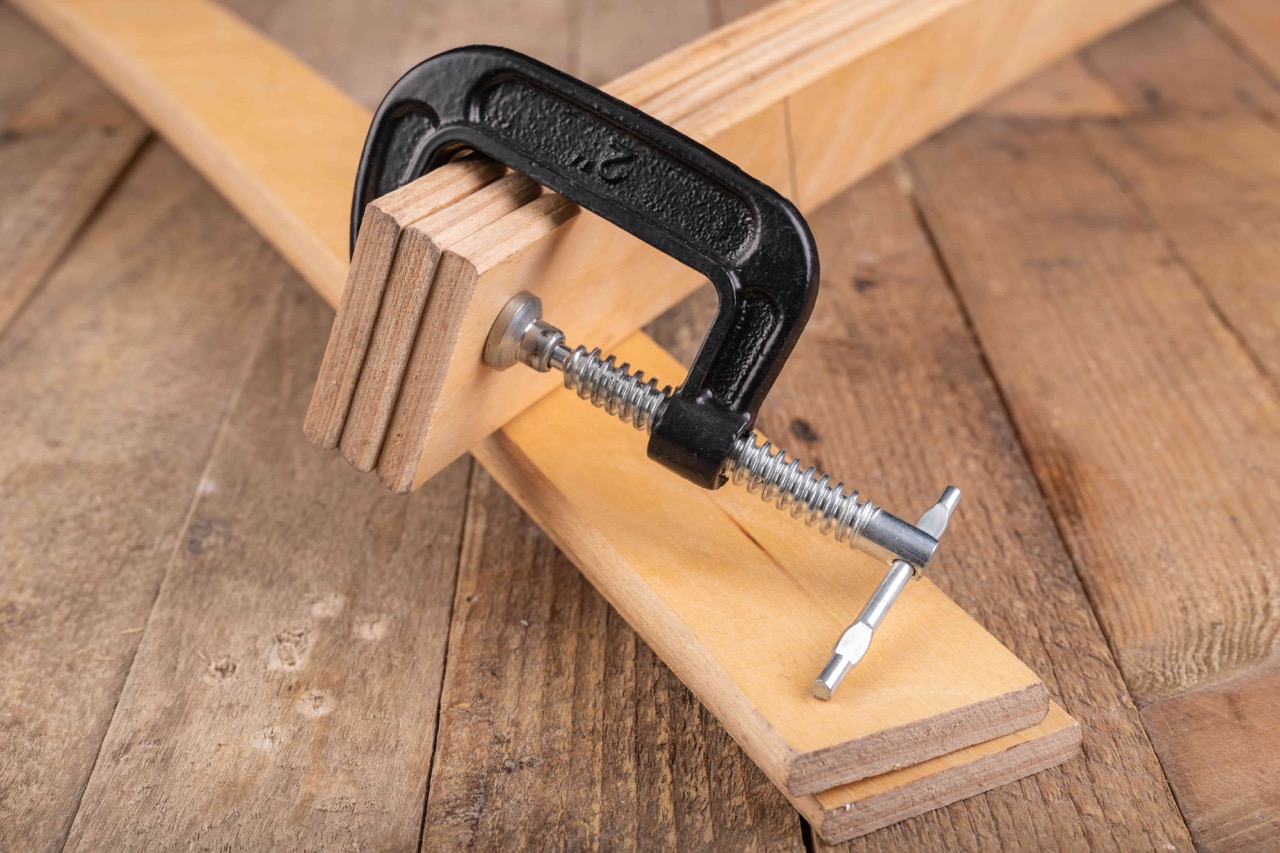
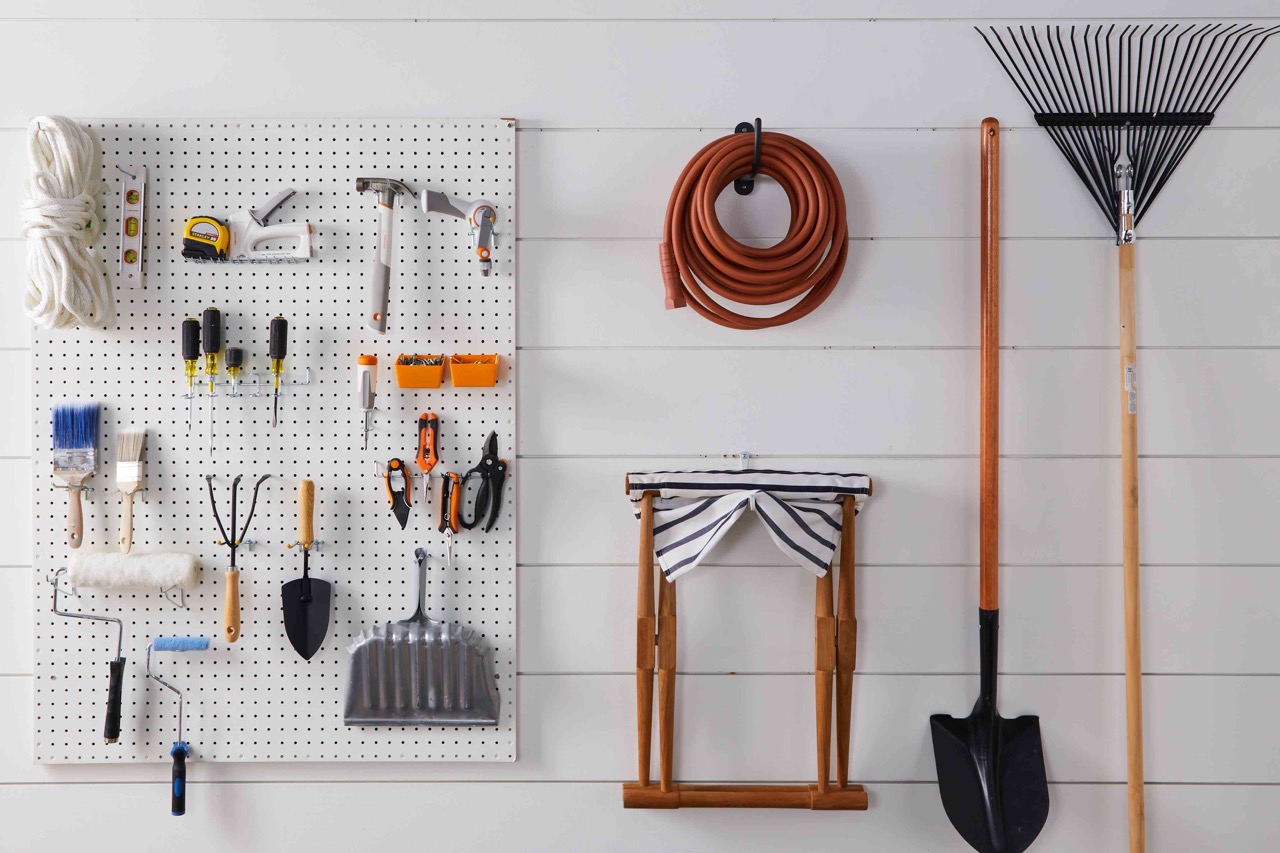
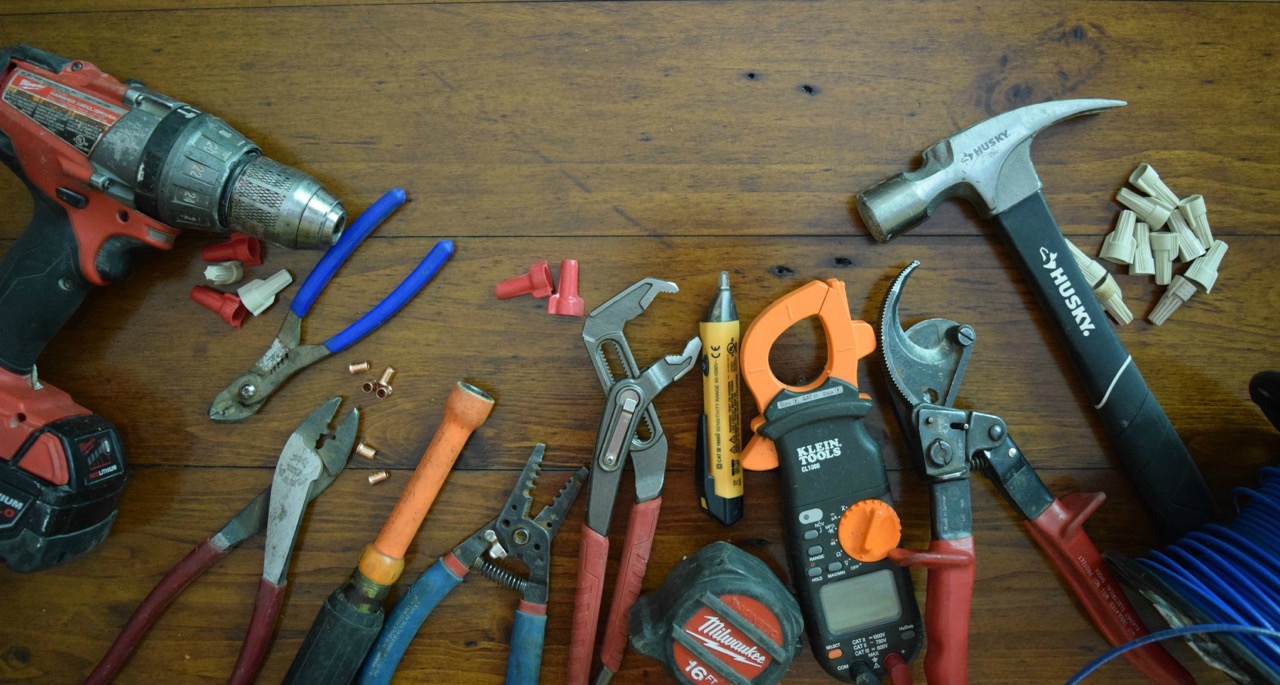
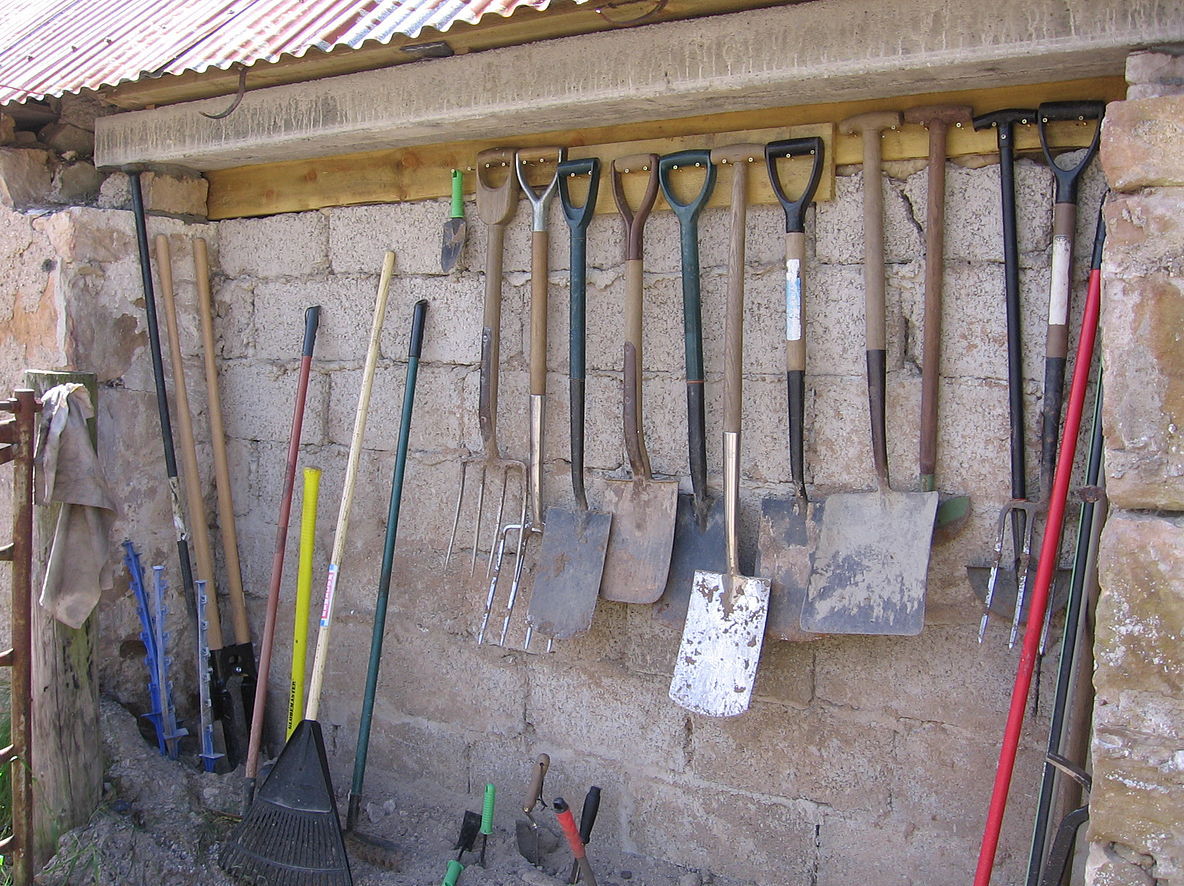
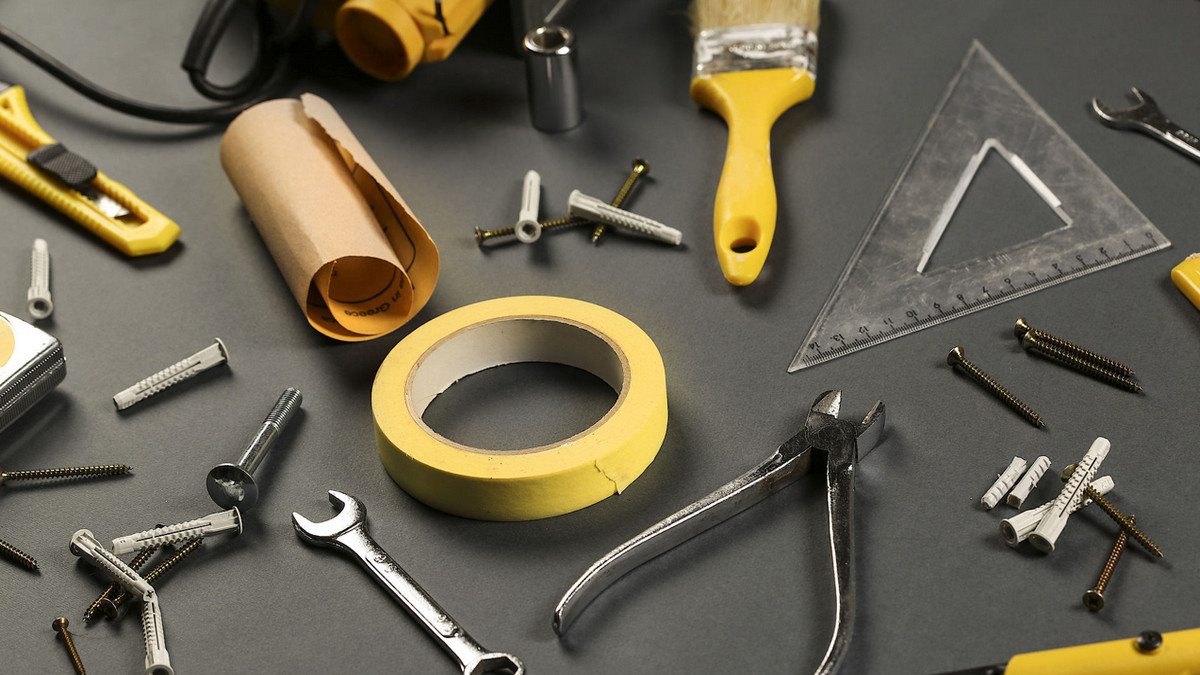
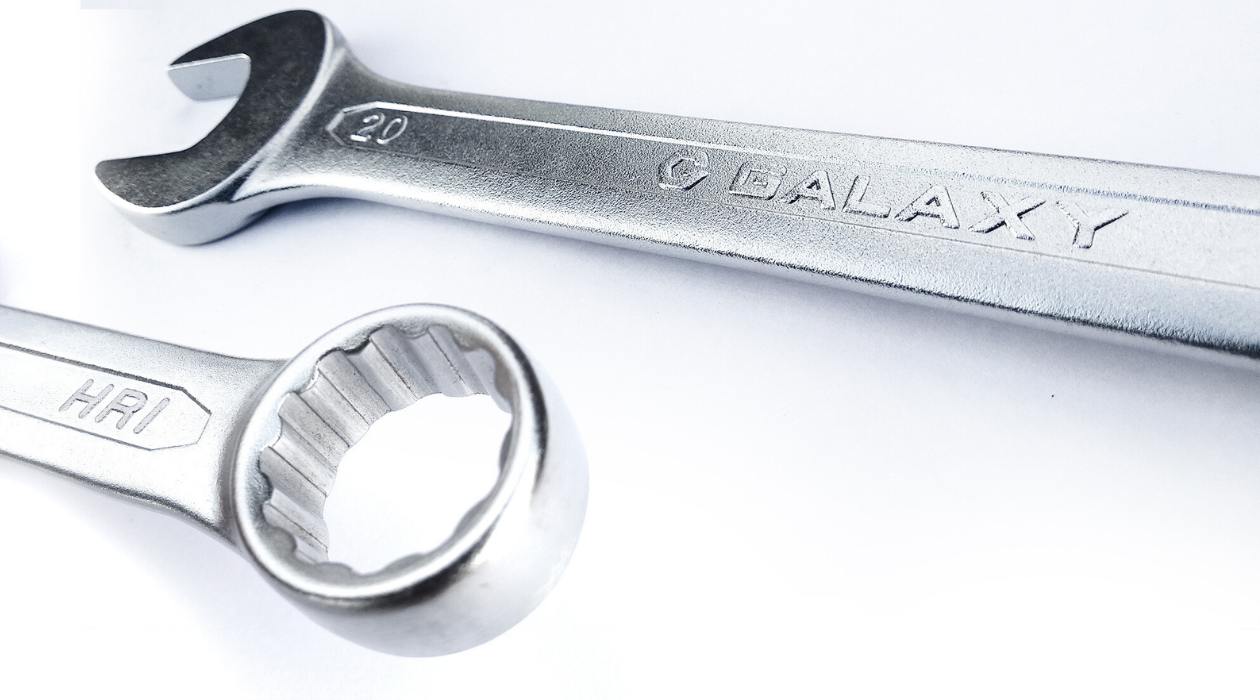

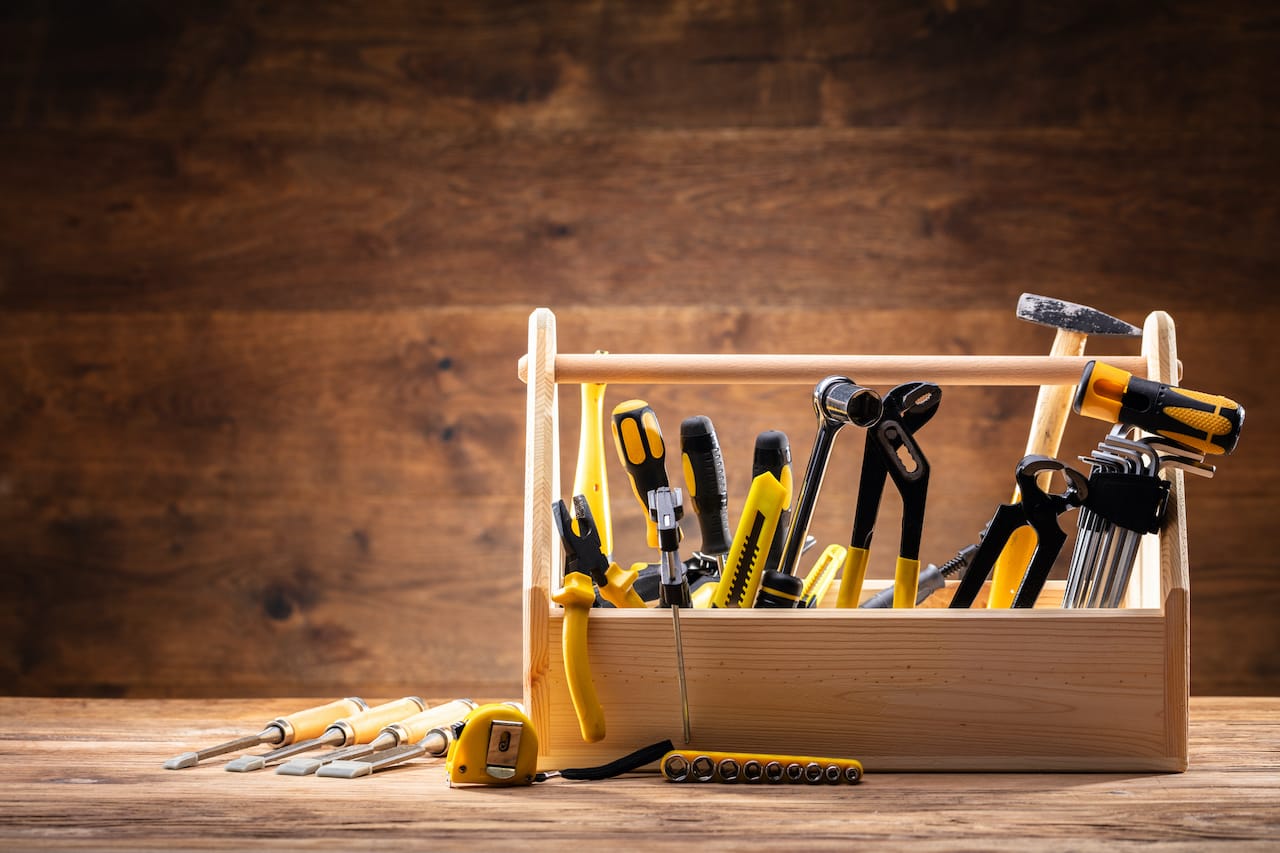
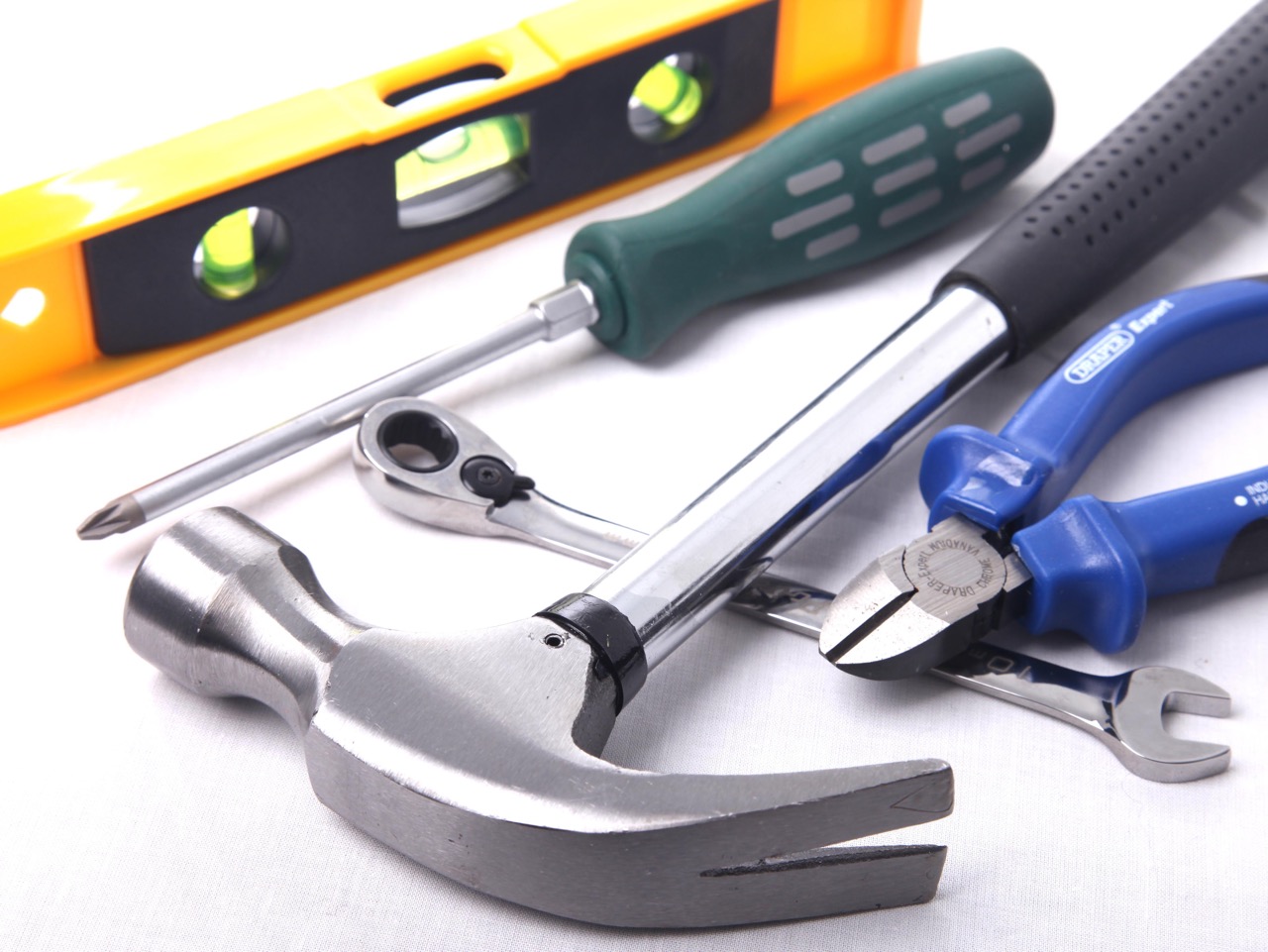
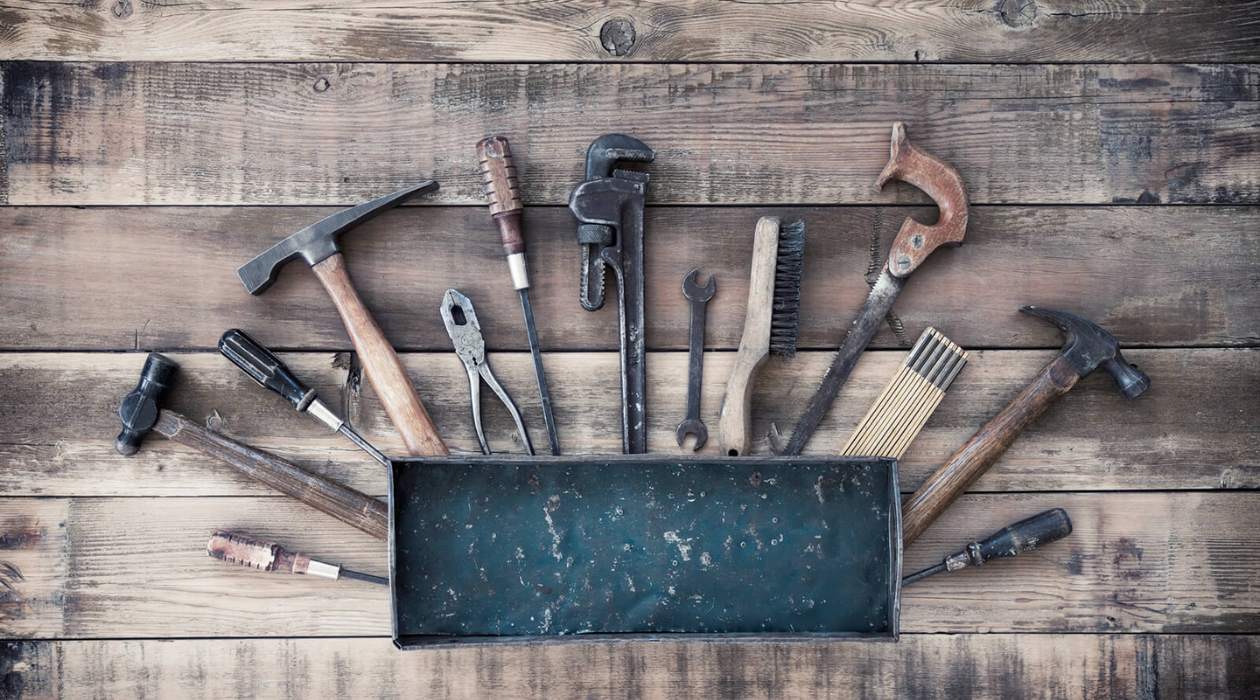

0 thoughts on “How To Store Garden Hand Tools”